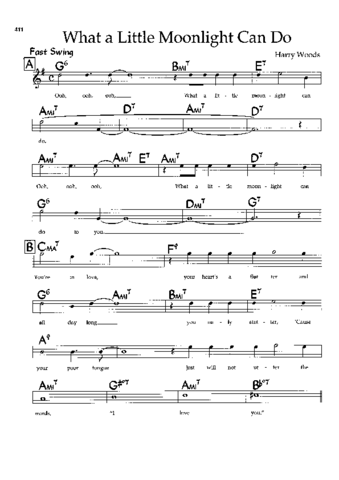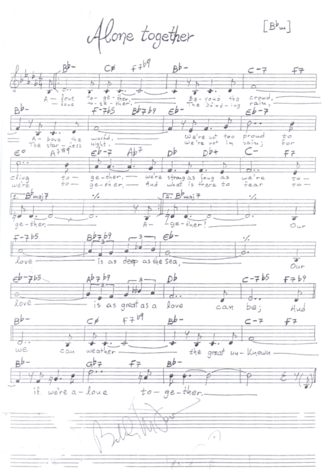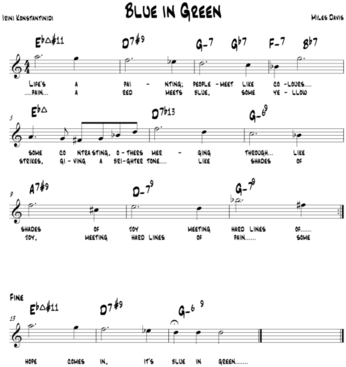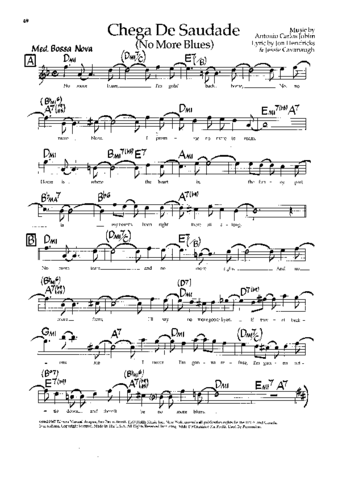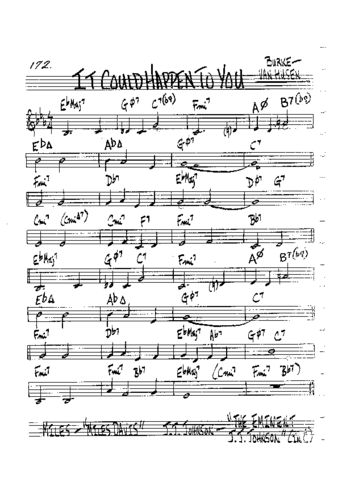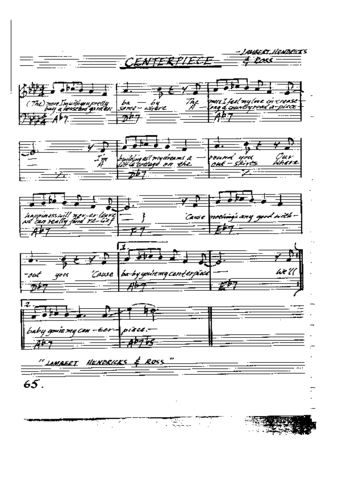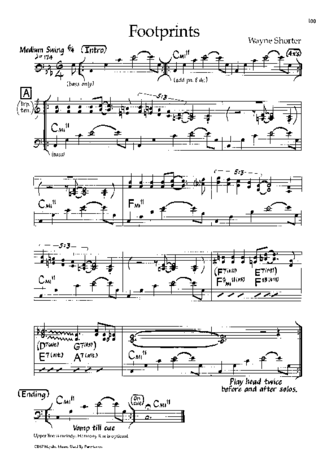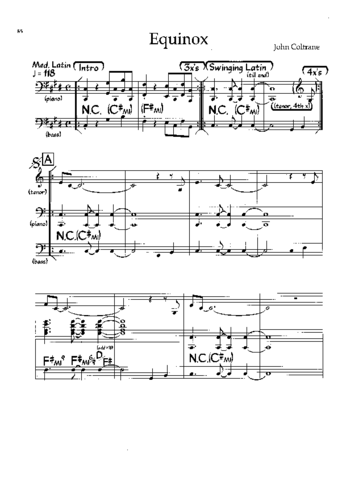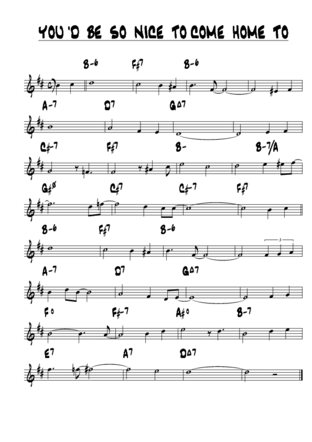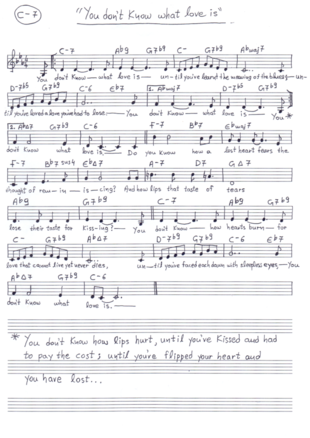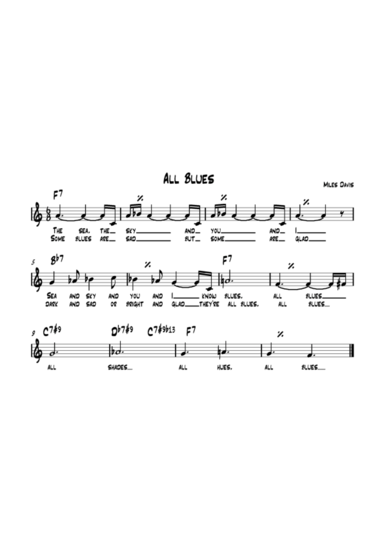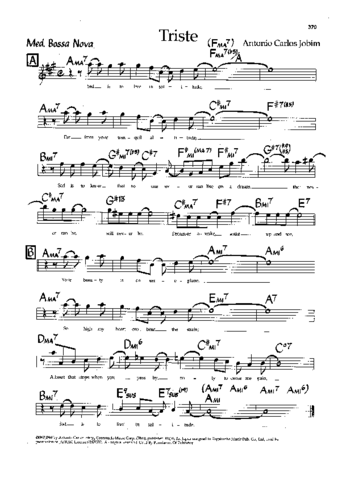1. What does the word phrasing mean to you?
(Phrasing means…) To clear up the articulation of musical sentences. First of all, the phrase has to swing. If it doesn’t swing and it’s not right rhythmically it doesn’t come in my ear. It doesn’t catch me. Also the dynamics of the phrasing… that’s the thing that makes the phrasing. So the swing, the rhythm; if there’s no rhythm in the phrasing, then it goes from one ear into the other ear out immediately. That’s what catches me and I say “hey, that’s nice phrasing.
2. Why is phrasing considered to be one of the most important elements in jazz music?
First of all, the most important thing for me is the swing. The phrasing has to be swinging. The rhythm of the phrase and the dynamics. If you sing like (example) bee-deedle-da or if you sing (example) pa-you-dlee-da, then it’s different! Well, the pa-youdlee-da (example) will catch me. The bee-deedle-dee (example) wouldn’t catch me at all.
I.K. Yeah, because it’s vibrant! Dynamics is good! If someone wants at some point to be soft, it’s also good. But if there is no energy…
E.I. The energy has to be there! That’s what it is! The dynamics are in there! Most of the time in the phrasing, it’s the offbeats. (example) Pa-dou-ba-dou-ee… if that’s not there (the accents on the upbeats) then it’s not alive anyway.
3. Besides the limitation of the lyrics and the fear of risk-taking while scatting, what more differences have you noticed in the rhythmical phrasing of an instrumentalist in comparison to that of a vocalist when playing the theme of a song and during their solos?
I think that when you stretch the time, when singing the lyrics makes it interesting. So when you think in six’s, in big triplets, then you can stretch the time and everything is more relaxed. If you sing like Billie Holiday…. She can stretch that time SO well!
I.K. By stretching you mean to make it loose…
E.I. YES! That’s the thing! You can see the difference in the singers. For example, in the students at school I don’t hear that! And for me, when you really go over the barline, stretch it, then you make it interesting! And then it starts to swing! And then it’s music! But to just sing with a nice time and everything… well, so many do that! But the thing that would be catching your ear, it’s the way they stretch the time and take the time. You have time!
I.K. There’s pure wisdom in that phrase: “you have time, take your time!!!”
E.I. Yeah, take your time!!! And I think that’s what you learn also from horn players. If you listen to how Dexter Gordon plays a ballad, you think he’s not gonna make it but he makes it! And that’s what I think is important for a singer.
I know YOU can do it, but there are a lot of beginner students that they have no idea. They have to learn and develop the voice and they have to catch some authority. This is also a very important thing; that you have the authority when you sing.
I.K. Yeah, it needs confidence.
E.I. Yeah! Even if you sing alone without the rhythm section, YOU have to be the rhythm section!
I.K. You have to provide that.
E.I. You have to provide it!
I.K. Of course, when you’re totally alone (acapella) you also have to provide the rhythm, so if you stretch it too much, then…
E.I. Yeah!!! Try to do it!!!
I.K. Yeah…bring it in!
E.I. Yeah, bring it in! I mean, a quarter note is a quarter note. If you stretch it and the time is there, then it’s fantastic!
I.K. And what about the solo? What differences do you see when a singer is scatting in comparison to when an instrumentalist is soloing?
E.I. Most scatting I just skip it. When a singer doesn’t scat well, then it’s terrible! The most scatting you hear from singers is shoo-be-oo-bee… This is the worst ever you will encounter in your life! I’ve played with so many singers and when they begin to scat, they’re horrible! That shoo-bee-oo-bee…. It’s terrible!!! But…. They have to know, of course, they have to think of going through the harmony. Like a horn player. The way of scatting is like…. If you close your eyes, you have to hear a horn. If a guy like Chet Baker, for instance, starts scatting, it’s like an extension of his horn. If I hear Sarah Vaughan scatting, for me, I hear a horn player. When I hear Deborah Brown scatting, I hear a horn player. And in that case, I can (I’m a drummer) the rhythm was there, the feeling. It doesn’t matter anymore if it’s a trumpet, a saxophone or a voice. It has to be equal. And I think that’s what it should be! That’s what you have to aim for! …To get so far in your development. A singer, if she scats like shoo-bee-doo-be-doo, then there’s nothing I can react upon either. And that’s also in one of your questions; how to get the interplay going. And the way to make space! If you make space, then there is something. And if you make space, then you sing rhythmically. You’re great rhythmically! There’s a great feeling. And if you make space in your improvisation, then we (the rhythm section) can react! And there are so many saxophone players who really want to play everything they know. And they play like a million notes, all great, all good and perfect timing but there’s NO room for interaction!
Singers (who just do shoo-bee-doo-be-doo) don’t have a proper swinging rhythm, no energy. It’s the language! I don’t mean the lyrics but the language of the music (that they lack in). Try to sing Charlie Parker. For timing also and phrasing, it’s interesting to try to get to Coltrane, cause his way of timing is totally over the barline. And that’s what singers should study! Singers should not study singers! If guitar players start to study guitar players, you get a horrible guitar player! Of course, they all play a million notes but when you hear a guitar, you know immediately if the guitar player plays like a horn player. It’s a WAY big difference! With singing, it’s exactly the same! If you have that feeling, then it makes sense to me, to scat. Listen to Freddie Hubbard, how he phrases! I mean you can learn so much from that! He stretches, he can get in front of the beat, he can be backwards… When you can PLAY with the time, that’s an important thing! Then things start to happen!
4. Besides the obvious contribution of the story that lyrics offer into music, what more strong points/advantages or tools of the jazz singer are there, that could reinforce her/his role in the band?
First, you have to swing, have that feeling. If you got that feeling there (swing feel) then you can play with the time! And that’s so interesting! Also as a drummer, you can do that, you can stretch the time. If you hear guys like Elvin Jones, who can stretch his lines over the bars. He has HIS one (beat in the bar)!
I.K. It’s a challenge to be able to follow Elvin Jones!
E.I. Yes! And sometimes he’s not playing on the form! Most of the time he does but he can stretch it so much that you have to listen to… He always lands in a “one” (beat) and that’s the next section of the tune.
I.K. Too much freedom can cause that, sometimes.
E.I. For a drummer, it’s easier when he’s alone, in his solo. When you do it (stretch the time), the beat can turn around. That’s another thing!
I.K. These things happen! Even in the most famous recordings, mistakes happen! It’s only human!
E.I. The thing is, how you solve that mistake.
I.K. How you “present” it. The real professional makes it sound like “we meant to do that, it was not a mistake!”
E.I. Yes! You see?
5. How can a jazz musician achieve a more adventurous and interesting phrasing in your opinion?
When he plays with the time. You can stretch it, you can make it shorter… as long as the groove is there and it’s not f….cked up!
I.K. Provided that you don’t lose the form, yes.
E.I. And space absolutely! Space brings the interaction.
6. What are the elements of phrasing itself that encourage the interplay within a band?
Playing with time, stretching the time, making space. You never get any interaction if you don’t leave space! You just play (example)dingi-ding-dingi-din…
7. What are the different types of interplay in your opinion?
When you’re soloing, first of all, you need to make the space. In order to get a reaction, one more factor is also, how interesting is the theme (the phrasing of the theme), the phrase or that line (during improvisation) that you are singing. What can I do rhythmically as a drummer with what you’re doing? If there’s no rhythm in there (in what you’re doing) …. You see, for drums, the rhythm is an important thing. Because then, rhythmically, I can play in a very musical way, that has something to do with your phrase. Or your phrase is so inspiring, interesting, that I can play something totally different, that you’ll get inspired by.
I.K. Yes, this is the point! This is what I want! To bring in nice things (phrases), so that I can get nice answers.
E.I. That’s it! Maybe I can take something from the last part of your phrase and then MY last part of your phrase will be something totally different, that you’ll say: “hey, I can pick something from that up!” And then you’ll have a good and interesting conversation. Then you don’t feel like you talk to a wall or like somebody’s deaf! That’s an important thing and then the music starts to get interesting!
I.K. So do you think there are different types or “layers” of interplay? Because I have noticed there are differences in the amount of interaction between musicians that meet in a jam session for the first time. If they “speak” the same “language”, they can have a certain level of interaction, a musical conversation. But what about if they don’t have the same language?
E.I. The ideal, of course, is for everyone to know the language of the music. If you’re in a jam session and someone doesn’t know the language, then… it’s over. Let’s have a beer! (laughs)
I.K. On the other hand, I think there is another layer, more “advanced”, where people (the musicians) play for a long time together. So apart from having acquired the same language, they’re also capable of elaborating their ideas, so they create something new, they’re not just exchanging the same licks all the time.
E.I. Yes, that’s true!
I.K. I mean Miles Davis second quintet (with Wayne Shorter, Ron Carter, Tony Williams and Herbie Hancock) is the best example of that.
E.I. Yes, that’s absolutely right! And later on, they played in “time no change”, like for example in the tune “Pinoccio”, they’re not playing the changes! The only one who’s playing the changes is Herbie Hancock. He plays the form and suddenly Miles goes (example singing the theme). (laughs)
Well, when you’re in an ideal situation, where you play with top musicians, then you get fed so much by what’s happening around you, that you can play, you can sing/improvise things you had never probably sung before in your life! And the thing is that you could never think by yourself, that you could do that!
I.K. Yeah, it’s amazing!
E.I. Once I had played with Frank Foster and all of a sudden; it was at the end of a long tour we had, that then I felt so free and I played things I had never played in my life! And I could never repeat it, either. And that’s a sort of ideal situation that you can get so creative!
I.K. But that’s the ideal situation! What about the other situation, that’s not so ideal?
E.I. The other situation… you just work on your “radar”, on what you already know, on your “luggage”…
I.K. Your own language, your own tools…
E.I. Yeah, the tools you have already… You work on your routine. BUT…
I.K. You work on your routine BUT you’re not an “automatic pilot”!
E.I. You’re not an automatic pilot! BUT your routine has to be a really good one!
I.K. So that you can “feed” the others and get something!
E.I. Exactly!!!
I.K. Because we’re not usually in the situation to play with huge musicians…
E.I. NO, No, no, no! Few times in your life (you’ll play with huge musicians). And those moments you’ll remember!!! You’re aiming for that but when you start doing that, it wouldn’t happen because what’s happening around you is not in that level. Or you can be so “strong” that you can get it out of the others. If you’re such a strong personality (musically) that you can “carry” all the rest (musicians in the band) up to a level. And then they’ll be really thankful to you and they’ll say: ”we worked with this singer and we could play things we’d never played in our life!” Here you go!!!
I.K. The contribution never stops!
E.I. That’s right! Exactly!
8. In what way(s) can the interplay become a sort of musical conversation?
Well, it depends on what kind of musical lines you provide! If that’s interesting or not; rhythmically plus harmonically.
I.K. And how much space you leave for your “interesting” contribution to be perceived!
E.I. Exactly! Exactly!
9. How do you teach your students to become more elaborate and interactive while playing in a band?
Talking about my instrument, the drums… First of all, they don’t have to listen to themselves. And they have to be able to listen to everybody at once! That’s the thing. To be so quick and so concentrated that they can hear the whole band. Plus they have to know the historical insight. They have to know the history of the music. So that when you’re comping (accompanying) somebody who plays in the style of let’s say… Lester Young… You have to know what to provide there. When you’re backing him, you cannot play like Elvin Jones behind that guy.
I.K. You have to fit into the style!
E.I. You have to fit a certain style…
I.K. The language of that certain style!
E.I. Yes! So you hear certain things and you say “ah, that’s typical of Lester or… When I play with someone I can tell like: “He listens to him or he listens to him, etc…
I.K. Yeah, all the influences!
E.I. The influences, yes! That makes it very interesting also: to know what to do and where. That thing I tell my students… to listen to all styles of jazz., as much as possible. Listen to the records! But don’t listen to the drums only! Listen to how Hank Jones comps for instance, how the piano plays… the piano and the drums! Because this (the piano) is a percussion instrument, where you can play melodies on. So the comping is more or less the same; the left hand of the drums is the same as the comping of the piano. That’s an important thing to be aware of.
And also to be able to get in touch with the bass player. So if the bass player is dragging, then you probably are able to help him. You have to listen to bass players! There is a difference between Ray Brown and Ron Carter and George Mraz.
And the important thing is to listen to the whole record not just one piece from that record one piece from the other! And that gives you the language! And the more language you have….
I.K…. the more you can add to the conversation!
E.I. Right!!! Exactly! That’s what I try to tell my students. They have to listen to everyone, not only to themselves.
I.K. It’s the same for everyone!
E.I. It’s the same for horn players, for the piano players, for everyone! Plus when you do that, you become faster in reacting.
I.K. Of course, it’s different when you start. For a beginner, who is so absorbed by the technique, by the lack of knowledge, it’s very difficult. I remember when I started, at the beginning I was so anxious about not making a mistake, not losing the form, not losing the pitch…! A beginner is so concentrated on himself, that we’re “locking” our ears!
E.I. Yeah! When I was a kid I knew how to play time (example), I was playing along with the radio. With the records, too! And I felt like I was a part of the band! I was not even listening to the drummer! I was listening to the music! That’s why I wanted to be a drummer.
I.K. So you tell your students to play over the records. Real recordings and not “play along”.
E.I. Yes!!! Real recordings! You can play with Lee Morgan, you can play with Hank Mobley, you can play with Sonny Rollins, etc…. That’s so nice! It feeds you! That way you learn the language! Because you hear the real language without the bull shit!
I.K. Yes! And it’s important to listen to the whole album and not only to one song!
E.I. And you have to learn the tunes. And later on, you may hear the lyrics!
I.K. Hearing it only once, does not mean anything! Because there are so many layers in jazz music, that you have to hear a record a million times; it’s like a good movie, that you have to watch many times, in order to see the details.
E.I. Yeah! That’s the thing! I always hope that students do that! I tell them: “Oh, listen to Sonny Rollins, how fantastic he plays in his solo! Try to sing his solo”!
I.K. That’s why you have to stick to one record for a long time…
E.I. That’s when the solo comes automatically and you start to whistle along with the solo! Get the rhythm of the solo! That’s what I was doing! And that makes your rhythm “feel” better, too! Everything is connected!
Space! Also gets the attention! Pa-doo-ya-doo-ya-doo-bap… (example)…
I.K. Yeah! It creates anticipation!
E.I. …and it starts to swing harder! When you make space, it swings better; and you can make some beautiful lines there!
I.K. So what you did right now was simple things but very clear! So you sang phrases, according to Schoenberg!
E.I. Yeah! Clarity! Clear phrases!
I.K. Clear… rhythmical but also melodically. But mainly rhythmical. Because if you don’t know where it has started and where it’s ending; and it’s vague, so then how will the other person react? It’s really annoying!
E.I. Yeah, I don’t have the patience anymore to listen to that.
I.K. Yes but if you play… you can’t leave the drum-set and go!
E.I. Of course not! You have to be professional enough to help and raise the level.
1. What does the word phrasing mean to you?
Phrasing is pervasive from the beginning and end of a note; how you articulate the note…. legato vs staccato and everything in between; the end of a note like whether you do a vibrato or cut it off or let the note fade away; time feel meaning the swinging eighth note, which is the essence of jazz rhythm and swing; nuance of course which makes, each artist unique…. meaning in essence the way each individual speaks and gestures. Like in real life, nobody talks the same or expresses themselves the same. For example, the use of nuance for a vocalist might be a particular way you might end a note with breathiness or a “fall-off.” Maybe you bend a note which you can do a lot easier than a piano can do! (laughs) These are all the things that a horn player thinks about and are absolutely relevant to any singer, especially if they’re trying to do any kind of improvisation. The main way I teach this nuance subject is transcription. The way I teach transcription (and you can find it on my website under Educational Articles) is that the student sings or plays exactly…I mean EXACTLY, EXACTLY, EXACTLY (I can’t stress it enough!!!) like the original artist that you’re copying. So if you’re singing along with John Coltrane or Betty Carter, no matter who it is, there should be no difference between the student and the artist being copied. When I hear you sing or play, you should sound exactly in unison with the artist. That’s how I address matters of phrasing (a very over-used word by the way.) Because there’s no way to really notate all the things I just talked about. We can try but it’s quite tedious and a drag. The only way to learn about nuance it is to duplicate somebody who does those things well.
This also pertains to tone and sound on your instrument, which you try to emulate also. Again, I don’t mean only the notes, because everybody pays attention to that obviously. The essence of transcription is the aural process, learning things that cannot be put on paper. If I put a solo on a paper in front of you and I say play it, we don’t know how it’s supposed to sound with the tone, nuance, etc. It’s going to turn into an exercise. But once we hear Hank Mobley do it or Freddie Hubbard for example, then we get the feel, the kind of articulation, the nuance and we start to build, in an oral way from the master to the student, the true vocabulary without necessarily writing it down.
After you have copied the solo EXACTLY you get a rhythm section or play-along and execute the solo without leaning on the recording. We might change the key or change the tempo. Then I need you to write two “perfect” choruses in the artist’s style for a jumping off point to play your own solo, again in the style of the artist you are copying. Then there are some other things with analysis that I mention in the article about taking all the ii-v lines, for example, putting them all in one group on a page; choose two or three lines that are superior to the others; do them in all twelve keys and then going back to a play along and sing those ii-vs that you liked with variations. There’s a lot to be learned in this transcription process and I urge you again to read the article or get the DVD on this subject. The whole point is to use transcription for artistic evolution because if it was just an exercise, it wouldn’t be as useful.
2. Why is phrasing considered to be one of the most important elements in jazz music?
Phrasing is the most important element in all music. It means the way somebody speaks, beyond the content; the manner in which somebody sings, plays, talks and does anything. etc. We all have our own way of translating the material. In jazz everything is individual, having one’s own sound and approach. As I said phrasing is a general word like the word food. Within that overall expression are the ingredients that make something sound like jazz or country music or Beethoven.
3. Besides the lyrics and the fear of risk-taking while scatting, what differences have you noticed in the rhythmical phrasing of an instrumentalist in comparison to that of a vocalist, especially when playing the theme of a song or during their solos?
I have a lot of respect for singers who are good because you don’t press buttons or push keys. You have to find the pitch and it’s all within you with no instrument to fall back on. For singers, there are certain limitations because you could never sing as fast as I can play. Obviously sometimes we (especially horn players) get a little carried away because we can move our fingers faster than our brains and ears leading to what I call a disease “fingeritis”! That’s not a good thing. Singers have to also deal with the length of phrase a lot more than I do because I can blow for longer than you can keep a breath.
Again, a singer has the disadvantage of not being able to just put their fingers down and play some phrases… they have to work on it and be really dedicated to getting the nuances and all the pitches correct. It is not easy and I have a lot of respect for singers who can do that.
4. Besides the obvious contribution of the story that lyrics offer into music, what more strong points or advantages does a singer have that could reinforce her/his role in the band?
When a singer is in front of the band, it immediately draws the audience’s attention not just as a musical object but physically as well. When you are a singer the spotlight is on you big time and if you’re a woman it’s even more so. Therefore, before the first note is heard there is already a vibe by the physical presence of the singer, standing in front and commanding attention. They have to be aware that they are setting the mood. Within a few bars of singing, we hope that the attention is now on the music and not on the physicality of it. Again, the singer brings something special to the band, because everybody else has an instrument in their hands except you. So that creates more attention to the way you look and the way everything feels.
You’re producing sound with your body while we produce sound with our bodies through an instrument. Your instrument is your body.
On the positive side, a singer can leave a lot more space easily because you don’t push buttons meaning your hands are free to help out with expression and feeling. And of course, the singer has lyrics as a kind of secret weapon, meaning you have the storyline, which immediately is felt by the audience. For example, if you sing “now the moon is out”… it’s a perfect place to breath. If I go bapa-doo-baba doo, I have to decide when I’m going to stop. So you have an advantage in this respect; that you can really leave space and use it to your advantage.
5. How can a jazz musician achieve a more adventurous and interesting phrasing in your opinion?
The first level of learning something is imitating somebody else. We learn a lot by copying. And that’s what it is when you’re transcribing. You’re singing the way Hank Mobley is playing. And then you start to develop your own way of doing it and if you’re aware of that, you are going to probably come up with something unique. It might not be the invention of rocket science but it will somehow be you. When I hear Irini sing I know from the first four notes, I know that it’s her and not Stephanie, sitting alongside. And that’s something that happens naturally because it’s your personality coming through, but you have to work on it. You have to listen to yourself and see what it is there that’s not Sarah Vaughan or Ella Fitzgerald or whomever, but you. It’s probably a mistake or something that wasn’t perfect because now it’s you and these things happen of course. So there’s a little bit of naturalness in somebody’s phrasing that can be noticed but also a lot of study has to go on. If John Coltrane and Miles Davis sat down and waited for the inspiration to come to them, we wouldn’t know who they were. They heard something and expanded on it. Being adventurous has to do with one’s personality and work ethic.
The first thing you do with the tape is to take notes of anything you need to correct. We stop the tape to say: “You know…I didn’t mean that G natural…. I really meant the G sharp…. let me play that”.
The second thing you do with the tape is to listen for anything that sounds like it’s unique, even if it’s just one note that you sang in a certain way. Make that a separate piece or exercise and so on. The next time you sing “On Green Dolphin Street” you put that little thing in there…. you put it everywhere….you make a big thing out of a little thing. And it grows. It’s the seed that becomes a plant, that becomes a flower, then becomes a tree. That’s the process. That’s why we tape. We don’t tape to sit there and say: “Oh look how wonderful this is.” That’s fun but the work is to be listening objectively, no criticism, no “good or bad”… just what it is and how can I do this better.
6. What are the elements of phrasing itself that encourage the interplay within a band?
Again the most important element is going to be nuance, how do you take a note and make it yours. The second is rhythm.
The way you sing your eight notes and your rhythmic ideas will immediately have an effect on the rhythm section. That’s what they’re waiting for. They’re not waiting for the C7b9 really, but for the rhythmic information of the soloist to reach their ears and then for them to take that material and see what can be done with it. That’s how we have that musical conversation called spontaneous improvisation.
7. What are the different types of interplay in your opinion?
There is the one night stand and then there is the group that you try to keep together. Hopefully, you are performing with people who are better than you and more experienced. With people like that there are subtle signals that come through the band and the interaction is a result of the familiarity with the body of music that’s being played. That’s why we do jazz standards because everybody knows “Green Dolphin Street” and what goes on in the pedal point, etc. When it’s a group that knows each other it’s much more specific because I know how my piano player will phrase certain things since I’m used to him doing that, which gives me a big advantage. That’s why having an organized group affects the depth of the music. For myself, keeping a group together for years for me is extremely important because a lot of things are more understood without having to talk about them.
Last night I played with a wonderful drummer. When I stop, he should start to do more. If I’m phrasing and I like to stop and leave space, he’ll say ok that’s an opportunity for him to suggest the next activity. And that’s how the conversation which takes place between two musicians or three or four is what I am talking about. If the other musicians know how you play it is a big advantage towards the success of a performance. You start to take more chances which is inevitable because after a while you feel secure. I am thinking: “Let me try this” cause I know the drummer will save me and will give me the downbeat when I get lost. Confidence has a lot to do with what we’re talking about here. If you want to do something that’s a little different or unusual or something with the rhythm or phrasing, if you do it with a lot of conviction and believing it, even if it’s not perfect, a lot of times it works quite well. There are lots of things happening without consciously knowing it because we’re experienced in the music and that can sometimes be enough. There’s room for trying something and seeing what happens. And if something doesn’t work then you go back to the tape to listen.
I’ll tell you last night I played with this guy and a lot of times I was wondering if I’m at bar one or at bar five! (laughs) This is going to happen all the time. But we have to accept that; andit’s a fluid situation. The musicians are good enough to cover their tracks so that nobody knows it except the musicians.
I.K. Exactly, that’s so true. And it’s also a matter of trust and not getting criticism like “Oh, you lost the form…”
D.L. No, no, no… There are no opinions here. It’s just objective analysis. No subjectivity. When it comes down to the music, there’s no good or bad. It’s just is.
8. In what way(s) can the interplay become a sort of musical conversation?
The whole idea of jazz improvisation is to have a conversation about a subject that is agreed upon which may be the song or the tempo or the key, the lyrics or whatever. There’s constantly a conversation going on, no different than if I put four people around the table in a café and we talk about football. Everybody will have something to say. One person will have something brilliant to say, the other person will have nothing to say… maybe with a lot of energy, maybe very soft. It’s exactly what people do when they’re talking about a subject. That’s what we do in jazz.
9. How do you teach your students to become more elaborate and interactive while playing in a band?
First of all, they have to do their homework as we said at the beginning. Look back to the imitation process and get it up to the highest level. That’s number one. When we get to the playing situation, you have to make them aware of what they’re doing, what they’re playing has possibilities beyond what they think…so you ignite a conversation. That’s why the tape is so important to listen back. You might have done something and then it went unanswered or undeveloped. “Oh, man… I had a great idea on the third chorus and I left it instead of exploring it.” This is a kind of a self-analysis that you have to do. You have to learn to be your own teacher. And that means looking at what you do, improving it, getting it as close to perfect as possible. Not to be obsessive about it but to be as excellent as you can. “How can I use this in a larger way than I’m using it now” and everything will follow when you start doing that. It takes its own course.
In the end, once you have a certain amount of vocabulary, you can be pretty much on your own. Once you do your homework as we call it, then you’re ready to take more chances and naturally feel more confident. These things follow each other.
1. What does the word phrasing mean to you?
Phrasing is the coherence within a musical phrase or within a series of musical phrases. If you do (example) it’s a musical phrase. Now what you do after that… you can do (example), which is a contrast of the first phrase or you go (example), which is more a continuation. It’s the music understood as a language.
It’s the way we speak. The language of jazz is like rap. It’s totally different from the language of classical music, which is “melos”, very melodic and takes you away in a voyage, but it’s not (example)! Jazz is very rhythmical, very irregular, it’s close to rapping, to talking. You’re not going to get into a conversation by just reading the dictionary and think that you’re saying something! Even in this conversation… if you listen to the WAY we speak, fast and slow, where the accents are, where the silence is…. It has nothing to do with (example)! So phrasing is connected to speech. And especially in singing because you DO have lyrics, you DO have words, it would be silly to not connect it to speech!
2. Why is phrasing considered to be one of the most important elements in jazz music?
If there’s no phrasing it’s just a bunch of notes and that’s utterly uninteresting to any listener.
3. Besides the limitation of the lyrics and the fear of risk-taking while scatting, what more differences have you noticed in the rhythmical phrasing of an instrumentalist in comparison to that of a vocalist when playing the theme of a song and during their solos?
Scatting and improvising for a singer is hyper important, not as a goal but only as a means. Singers sometimes don’t have the tools to become musically flexible and be able to phrase and be different every time; so they get stuck in just one version of the rhythmical interpretation of the theme. On the other hand they may become “trapped in their musicality” and get “hysterical”, making variations with the theme but in the end the phrasing of the lyrics is not natural and the story is not getting across. The real phrasing of a singer is the presentation of the lyrics in a musical way but having the lyrics and not the musicality as the leading parameter. And that is what you hear in singers like Frank Sinatra or Ella Fitzgerald… It always sounds natural.
The phrasing and the interpretation of the singer should embrace the fact that there are lyrics involved. The focus should NOT be on being different but on the personal rendition of the song.
Regarding improvisation… the phrasing awareness of the singer is mostly somewhat poor compared to that of an instrumentalist. If somebody happens to be a very good piano player then might be different, and like in the case of Chet Baker it’s very different because he just sang as he played. But in general, in my experience, most singers that improvise are naïve and hysterical in their improvisations and it’s not fun to listen to; it can actually become embarrassing. They don’t have sophistication of the half step, everything is more or less diatonic, something which works on most standards, but that is quite naïve really. The hysterical thing comes in when one feels that freedom, when one starts to improvise and get too excited and in the end the singer works him/herself up into hysteria! Of course, everybody gets through this stage in their musical life when they begin improvising but some singers stay into that stage for the rest of their lives. And they should protect themselves (and the listener) against that… Audiences will clap because audiences always clap for somebody who goes crazy and loses themselves… rock n’ roll is largely based on that phenomenon.
Jazz IS like a conversation. Everything you say in a conversation has to do with the fact that it is done in the moment. If you sit with someone, have a glass of wine and you talk and you have a GREAT conversation; that can be fantastic! And if you could record that or film it, then you could actually have an incredible movie! Two intelligent people talking! But if you would take down the words of that conversation and not the body language, not the empathy between the people and not the fact that it’s done on the spot… only taking the words down on paper and you said here’s a novel, you’re making a mistake. In other words, if you write down Charlie Parkers’ solo and you say that this is art… you’re wrong. Because Charlie Parkers’ solos are not art. But they are an incredible, superior way of conversation, and to listen back to that, years later, is still exhilarating! It’s not art, it’s not Mahler, it’s not Stravinsky…
The beauty of jazz lies in the fact that the performer is able to pull you into an exciting “now”- not of beautiful (composed) music - but a sincere “here and now”; it grabs you by the throat. The way the player sings/plays. I think that phrasing somehow has to do that. The jazz musician gives the impression that they’re telling you the story for the first time! We’re like magicians. And that’s because we (the jazz musicians) have the “resource” to make it different every night without going hysterical.
4. Besides the obvious contribution of the story that lyrics offer into music, what more strong points/advantages or tools of the jazz singer are there, that could reinforce her/his role in the band?
The most important thing is the quality of the instrument for a singer. And the quality of the instrument is a very wide subject. Many people’s favourite singers don’t have great instruments, like Billie Holiday… she didn’t have a great instrument. Quality is a very wide phenomenon. I’d rather listen to the copper voice of Nana Caymmi than the bedroom whispers of Astrud Gilberto. Yes, she was famous… and she could sing, she could hold a melody; but the more personal and coloured singing of Nana was so much more interesting and touching for me.
Like so many conservatory vocal students… they all come with that breathy voice; lovely, meaningless, sensitive. But I want to hear olives, I want to hear vinegar….whatever that is!!!
And somehow this is also true for instrumentalists (maybe less for piano or guitar) but it’s definitely also true for horn players. And there is this element that it’s not talked about enough…. What is your sound, what do you like? I mean Dexter Gordon’s sound had little to do with the sound of Zoot Sims. Yet, they were both tenor players. Coltrane and Sonny Rollins, they all had such a gigantic different sound!
So, when a singer comes and she doesn’t just sing “pretty”… who needs it?
So in relation to your question... Yes, what you can add is a very deeply personal instrument, a very personal sound, in which you will deliver the song that you want to sing whether it’s a fifty years old Broadway song or a modern song.
If that’s not addressed, you’re really missing the point. If after four years of Bachelor education in the conservatory you just go doo-ba-dooba-doo….. and now you think you are a jazz singer…. NO!!!! Where’s the voice, where’s the expression?
5. How can a jazz musician achieve a more adventurous and interesting phrasing in your opinion?
To go into the meaning of the song… you also miss the point. That’s what a mediocre vocal teaching often does. Here’s the mature 50 or 60 years old singer that can say to the 22 years old student: “I don’t feel that you mean it…”. Yes, that’s true… of course you can say that but is that ALL you can do? I find that cheap! But… what do you do about phrasing? How do you practice? How do you work on the way you can delay, where does it land on the beat, how can you postpone, how can you make it earlier, how can you learn that flexibility. Where can you go away from the melody? But in order to do that, you have to be a jazz person. You have to feed the student with variation techniques and improvisational tools. From that, you might create, or better: inspire great singers! Give the student the tools to pull it into their own field and then if someone says “I’m not comfortable with that, I just go…(example)”…. That’s fine as well!
6. What are the elements of phrasing itself that encourage the interplay within a band?
If you refer to the phrasing of the melody…. We have to pull that apart. There are two areas. When you do the melody or if you’re scatting, those are different worlds. When you do the melody there is no interaction. Interaction during the exposition of the theme doesn’t exist. It’s an overrated myth in music. The real interaction started from the 60’s, from Bill Evans onwards. Before that, the rhythm section was the rhythm section.
Then the interaction was not the big thing about jazz. But of course, there is a subtle interaction that has been a part of jazz and part of music of all ages. Let’s say when a singer goes up, often the singer becomes louder. If as a band you don’t respond to that, in terms of dynamics, not in terms of imitating like (example), then there is this swell or this little thing on the drums… When you sing that note you want to feel supported. If the band plays soft at that moment, you feel alone as a singer. Interaction exists on many levels. One of them is the dynamic level and the dynamic level is as natural as life. (example with a story)
If musicians are not able to deal with dynamic level, you might as well find another drummer or another pianist or bass player. And I would say (interaction) it’s not really that important. If the pianist gives you the right chords and you sing your song and he doesn’t bloody get in the way, and the bass player knows that all he has to do is to play on the one and the three (if it’s in a ballad)…because that’s really all it is, and it serves the music and serves the story of the singer (or the horn player…) it’s what it is all about, then that’s it!
The other thing is… if you as a singer want to pretend to be a mature improviser and you do your “shoo-be-doo-be-doo”, hopefully, the guys might be nice enough that when you go (example) they’ll follow you a little bit so you don’t feel like they’re not hearing you. But I think that once a good singer starts to do mediocre improvisations, the whole thing of interaction becomes quite an irrelevant issue, because what you’re going to do with a mediocre improviser…?
I.K. But let’s suppose that it’s not a mediocre improviser because the question is not only about singers…. But about the elements of phrasing that encourage the interplay within a band and it affects all musicians that are soloing.
H.G. Often it’s not the phrasing; it is the energy – and mostly: it is the LISTENING. Often people think it is about the rhythm section responding to the soloist – but the vice-versa scenario is at least as important.
7. What are the different types of interplay in your opinion?
You know there’s this period that all musicians go through... they all start not hearing anything. And the next step is that you hear a little bit what the drums is playing, and of course the general energy, but you really don’t know what the soloist is doing. Then later in life, you start to hear the pianist playing a b9 or whether there’s a tritone substitution. And then you’re still quite immature… and when the soloist goes (example) then you go (example) “aha, I heard you”! It’s really not that interesting and actually, you hear many young musicians do that all the time, it’s like an imitation; it’s really not very interesting, it’s just a step within the development. It’s fine but (interplay) is not about that.
But if you want me to answer your question… (example with a story) I was playing with Dee Dee (Bridgewater) in a jazz festival in Antibes ….. and after we played there was Stan Getz with Kenny Barron on piano, Ben Riley on drums and Yasuhito Morion on bass. Stan Getz’s phrasing is fantastic. And what the drummer was doing was (example) beautiful groove and he was doing that little stuff on the snare (example). I start to focus on that “little stuff” on the snare and I realize that it was totally in sync with what Kenny Barron was playing on the piano. And then I listen to Stan Getz finally… He was playing (example) and those three (notes) were on the piano and on the snare drum at that moment and then I realized how incredibly high the level of those musicians was. You can say that jazz drumming is like this (example) and on the snare drum you do this (example) random “kat-ka”. That’s the sound of jazz. But what I heard was that this random stuff on the snare drum was not random at all. It was totally connected to the phrasing of the soloist. And the pianist was actually doing the same. They all had their ears glued not to themselves, not to each other but: to the soloist. So that stuff would “fall” together and be coherent. It was such a lesson, telling me interaction is not an obvious phenomenon but can be a very subtle one.
8. In what way(s) can the interplay become a sort of musical conversation?
Interaction is often an overemphasized element I think and at the same time, it’s the most crucial element of making music. But that’s not true just for jazz, but for all genres of music. Interaction can have something to do with imitating phrases, but it is only one way. Interaction has so much to do with dynamics, interaction has to do with bending the time… There are many subtle ways of interaction that are fantastic and as we learn more about interaction to look at classical music or great pop music becomes fascinating. You see how Steve Gadd plays behind James Taylor and it’s not that he’s reinventing his part every time because pop music is in fact written music; sometimes it’s not written down but it’s the same every night. But there is a fantastically subtle interaction going on and that’s what makes Paul Simon band sound SO much better than the top 40 bands that imitate his songs to the note. And funny enough this has to do with all that interaction, leaving space like instead of go (example), there are many bass players that will go (example). Nothing wrong with that! Many great bass players… they don’t do it! They don’t interact because the choice to NOT interact is the best choice! And I had to learn that because I played way too busy as a young man… And it took me 25 years to go (example) when Toots Thielemans would go “ne me quitte pas”. Just play 1 note per bar.
I.K. Of course! Because he left space but he meant to do that! He didn’t want anything or anyone else to comment on!
H.G. RIGHT! And there’s also the pianist… who has to do more because he can’t just put the chords down… so he’s filling. And the drummer does not just go (example). So what is the place of the bass? “Boom”… (example) and loving that whole thing! And THERE is interaction! Now… if someone would analyze that bass part and said: “Hmm, the bass player, in this case, didn’t interact at all with his fellow musicians”, he’d totally misunderstood what he was doing!
I.K. Interaction is to respect the space and the silence of the music at that point!
H.G. Absolutely! Like in a good conversation! A great conversation is not like “oh yeah, I know what you mean, I agree” You try to stay quiet and attentive. To be attentive is perhaps the basic word… and the understanding of music. These are the basic tools you need to interact. Often interaction means taking the choice to NOT interact. With my bass players, I call it “the poker face: “I hear everything… I’m not going to react to it”. “You played a tritone substitute, you played a quick dat-dat-da rhythm (example)… I’m not going to respond to that! I could do that but I won’t! It’s my choice.”
And I’d say, the more mature you become, the “non-response” becomes the best choice!
9. How do you teach your students to become more elaborate and interactive while playing in a band?
I’d say to the rhythm section: “I just want you to do this: bass player, you don’t do anything except this (example) nothing more than quarter notes. The drums play only (example)… that’s it. You do not touch that snare nor the bass drum.
Already that… is deeply satisfying to listen to.
And then to the pianist I was saying: “just think of Red Garland and go (example) on the one and the three. That’s it! It took me half an hour to convince them to play like that.
I tell you Irini… THAT already sounded great! Because there was no hysteria in there, there was no so-called interaction, there was in fact: nothing.
And then I’d say: “Ok now, I’m going to scat now for you, I’ll be the horn player. So I’d start (example) and I wouldn’t stop of course (example) and I would repeat a little phrase like that a few times and there they were!!! Pa-doo-dap on the snare drum!!! And the pianist would go like that (example) instead of (example). But it would be for a reason!… Which reason? The reason of connecting to the phrasing of the soloist. Every group of students I did this with… their eyes were falling out of their faces because they had never ever thought about that. What does a piano player practice? Voicings. But then he goes (example) and it’s generic nonsense. It is not connected to anything. So by putting the youngsters into that neutral-listening space and say: “you only deviate or play on the snare drum when there’s a real reason for it. When your ear is not glued to yourself but to the phrasing of the soloist, then you have the right to respond!” And then after an hour doing that with these cats, they bounced out of the room because they realized something that is so essential but maybe also so forgotten. And then to reflect that back in the mirror to the soloist or to the singer… if you’re singing a medium (tempo) song like “my romance” and the whole rhythm section is (example) doing all that stuff and you want to do (singing) “my romance”…. And all that stuff behind you is, in fact, unrelated to what you’re doing. That doesn’t teach you much as a singer. For what reason would you want to change your phrasing? Because it’s like you’re trying to have a great conversation and nobody’s listening.
The relevance of the phrasing has so much to do with the embedding of that phrasing within a real context. Otherwise, you might as well go on stage and put a Jamey Aebersold thing on behind you. If a real band would sound close to that it would be terrible, don’t you think!!! And maybe that’s not that far from the truth sometimes.
I.K. And the word space that you said… I like that one because if you don’t let some space as a soloist, the rhythm section will not have room to respond to anything that you’re offering.
H.G. That’s absolutely true; as long as they realize that space can be filled with a lot, or with nothing.
I.K. It’s the same thing but looking from the other point of view. If you said to the rhythm section to just play so simple and do nothing else but only when they feel that it’s time to do something, the same thing also applies on behalf of the soloist; to not just do things because now it’s his turn but because music is demanding for something to be “told” at that moment.
H.G. Absolutely true. You’re so right! Because it bounces back the responsibility to the soloist; what are you going to do…? If you imagine (example) and you sing “my romance” (example), you will be sure there will be no reaction. (example). So in other words, the responsibility also comes back to the main speaker, which is the singer at that point.
Because the conversation is about the listening and leaving the space for everyone to respond and take it into another direction.
I.K. Exactly! Because that is my main conclusion actually… That if you don’t leave space nobody will interact, nothing will happen. You’ll just be in your own world, “riding the horse” and running all by yourself.
H.G. Exactly, exactly. Everybody’s bored and…. It’s so true! When'own field azz person. You have to r) butWhen'own field azz person. You have to r) butWhen'own field azz person. You have to r) but
When'own field azz person. You have to r) butWhen'own field azz person. You have to r) butWhen'own field azz person. You have to r) but

